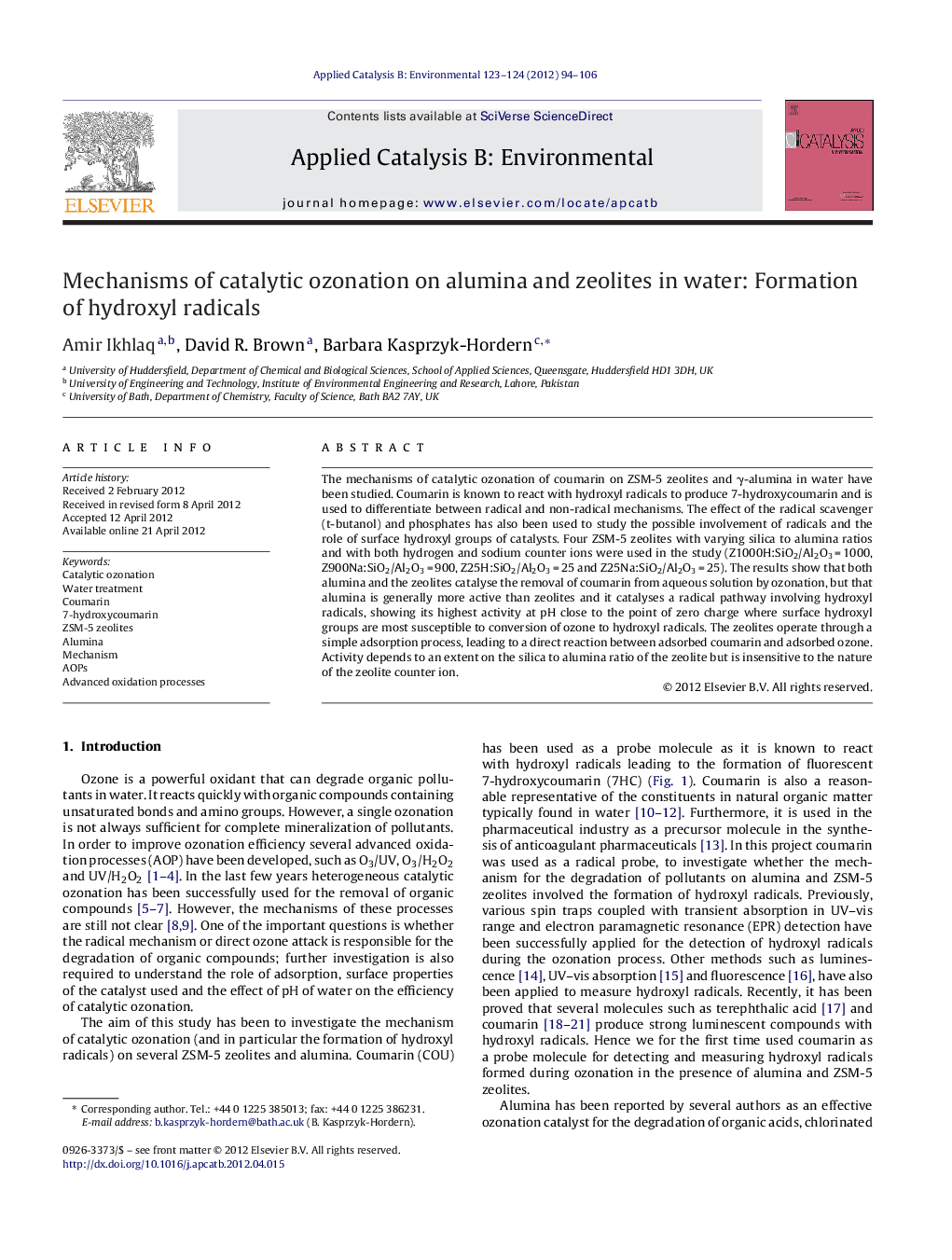| Article ID | Journal | Published Year | Pages | File Type |
|---|---|---|---|---|
| 46127 | Applied Catalysis B: Environmental | 2012 | 13 Pages |
The mechanisms of catalytic ozonation of coumarin on ZSM-5 zeolites and γ-alumina in water have been studied. Coumarin is known to react with hydroxyl radicals to produce 7-hydroxycoumarin and is used to differentiate between radical and non-radical mechanisms. The effect of the radical scavenger (t-butanol) and phosphates has also been used to study the possible involvement of radicals and the role of surface hydroxyl groups of catalysts. Four ZSM-5 zeolites with varying silica to alumina ratios and with both hydrogen and sodium counter ions were used in the study (Z1000H:SiO2/Al2O3 = 1000, Z900Na:SiO2/Al2O3 = 900, Z25H:SiO2/Al2O3 = 25 and Z25Na:SiO2/Al2O3 = 25). The results show that both alumina and the zeolites catalyse the removal of coumarin from aqueous solution by ozonation, but that alumina is generally more active than zeolites and it catalyses a radical pathway involving hydroxyl radicals, showing its highest activity at pH close to the point of zero charge where surface hydroxyl groups are most susceptible to conversion of ozone to hydroxyl radicals. The zeolites operate through a simple adsorption process, leading to a direct reaction between adsorbed coumarin and adsorbed ozone. Activity depends to an extent on the silica to alumina ratio of the zeolite but is insensitive to the nature of the zeolite counter ion.
Graphical abstractFigure optionsDownload full-size imageDownload as PowerPoint slideHighlights▸ Coumarin was used as probe molecule to investigate OH formation during catalytic ozonation in water. ▸ The ZSM-5 zeolites act mainly as adsorbents of ozone and coumarin and do not generate hydroxyl radicals. ▸ Al2O3/O3 leads to hydroxyl radicals formation due to interaction of ozone with surface hydroxyl groups of alumina.
